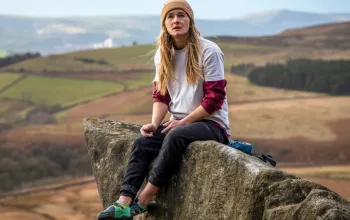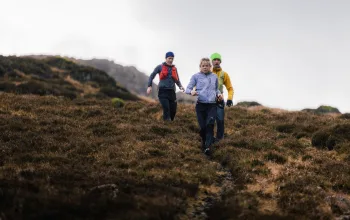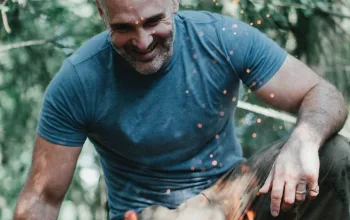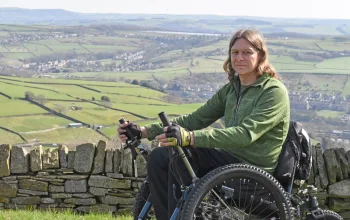Kate is the founder of the St Paul’s Trail, as well as the Lycian Way and Kackar Trail; she’s also the founding member of Turkey’s ‘Culture Routes Society’.
As Pete talked to Kate in her back garden, her doorbell hardly stopped ringing, as hikers from all over the world sought out her advice, some help and even a place to store their luggage…
AT: Did you hike in the UK?
KC: No, I never hiked at all in the UK! I moved to Turkey because I love the old roman roads; that’s what led to me setting up the trails.
AT: Can you tell us a little more about the Culture Routes Society?
KC: I started my first route in 1999; the Saint Paul’s Trail was my second. This inspired others to start creating their own routes. By 2011 we had many trails, some of which were supported by local government, others not. The ‘European Institute of Cultural Routes’ will only work with NGO’s, so in July 2012 we established Turkey’s Culture Routes Society. We currently look after 19 cultural hiking routes within Turkey, offering advice and contacts to hikers.
We’re now looking to extend our tentacles abroad, linking international routes to ours. We hope to link up trails in turkey with the Abraham Path which starts in Palestine, the Sultan’s trail starting in Vienna, and the Via Francigena, a pilgrim’s trail which starts in Canterbury.
We’re funded by subscriptions, book sales and we’re also working on a phone app. We sometimes also get a small amount of funding from the travel agents that use the route.
AT: How many people hike the trails?
KC: We have no really accurate figures, but around 30,000 hike the Lycian Way each year.
AT: Does that surprise you?
KC: No! It’s a good trail. But the St Paul’s is a better one.
AT: What were the main problems with setting up the St Paul’s Trail?
KC: It’s a balance between users and accommodation. Coastal trails aren’t such a problem, as there is often already a pension and they’re used to tourists, but inland it can be problematic.
AT: Are there realistic overnight stops, with accommodation, along the whole length of the St Pauls Trail?
KC: No, not everywhere; in around two thirds there is. There are a few little gaps where you’d need a tent, but we can advise you on what to do.
AT: Are the mountain villages happy about the trail?
KC: They found the concept of people walking a bit strange, but once they got over that, they were very happy to see tourists. While there’s still only a few people hiking the trail, it’s all very sustainable and low impact on the locals, and it brings much needed income into the villages. When I came to Turkey over 25 years ago, 30% of the people lived in the towns - now its 70%. It’s a massive shift, and it’s caused the closing of village schools and health centres, which in turn forces the pace of the exodus.
AT: Are there any sustainable cottage industries in the mountains to encourage people to stay?
KC: No, not any more. There’s a big textile industry in the cities, lots of M+S clothes are made here, so there’s no real incentive to make or knit traditional clothes anymore -although I do know one lady who wove her husband a tractor cover! I wish someone would organise a cooperative to keep these skills alive, but trekkers don’t buy anything anyway, as they have to carry it.
AT: And finally - do you have any new plans for routes?
KC: We have plans for a new loop on the Lycian Way, and we have an exciting project to open up a part of the silk road where it crosses the Euphrates. It’s an amazing section of old roman road in the Kabalia region of western Turkey. It only a small section, but we hope it’s just the start.
For more information on all of Turkey’s long distance trails, see cultureroutesinturkey.com
To read Pete’s account of walking the trail see the current issue of Active Traveller, which is in all good newsagents and here





















